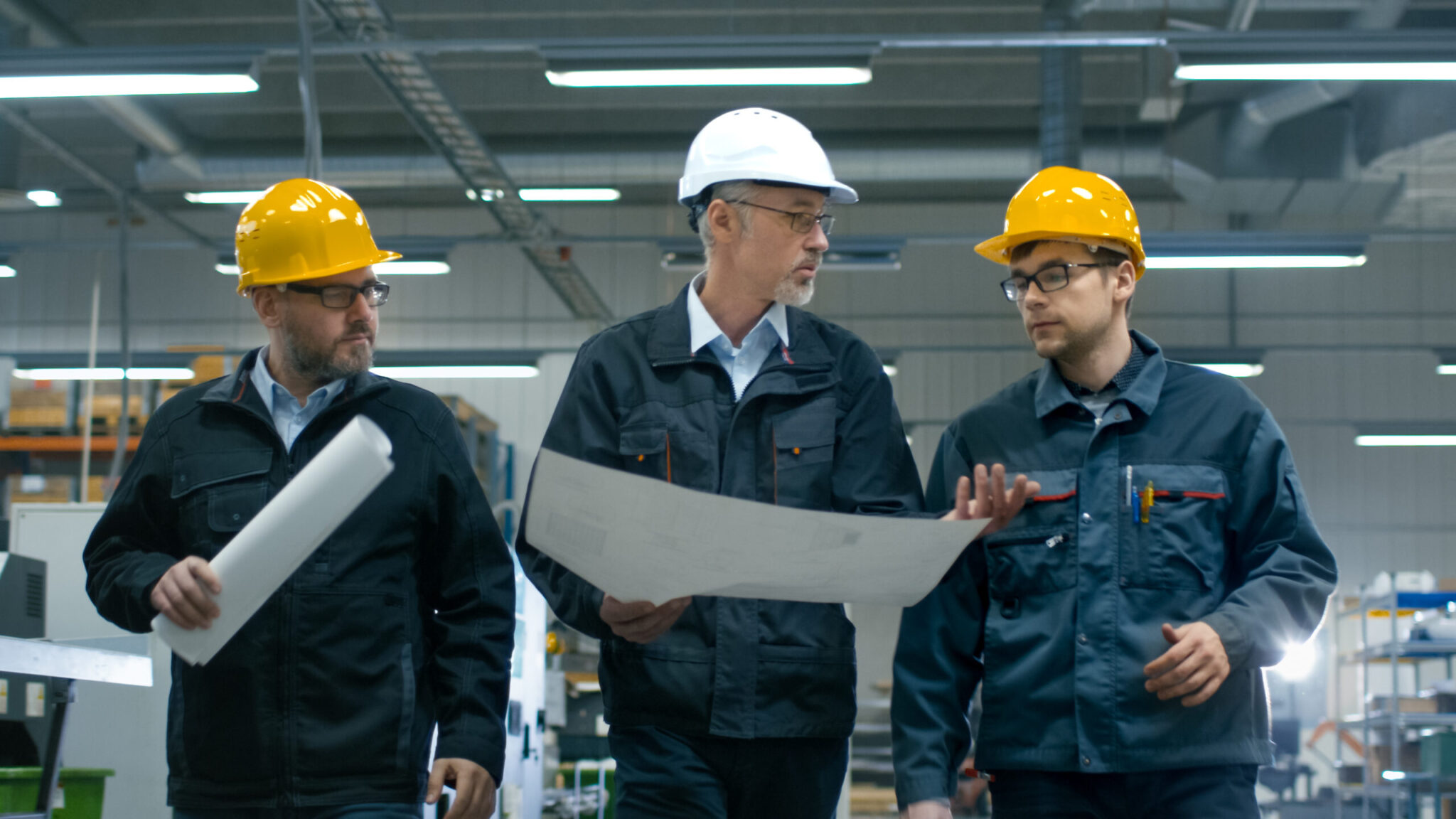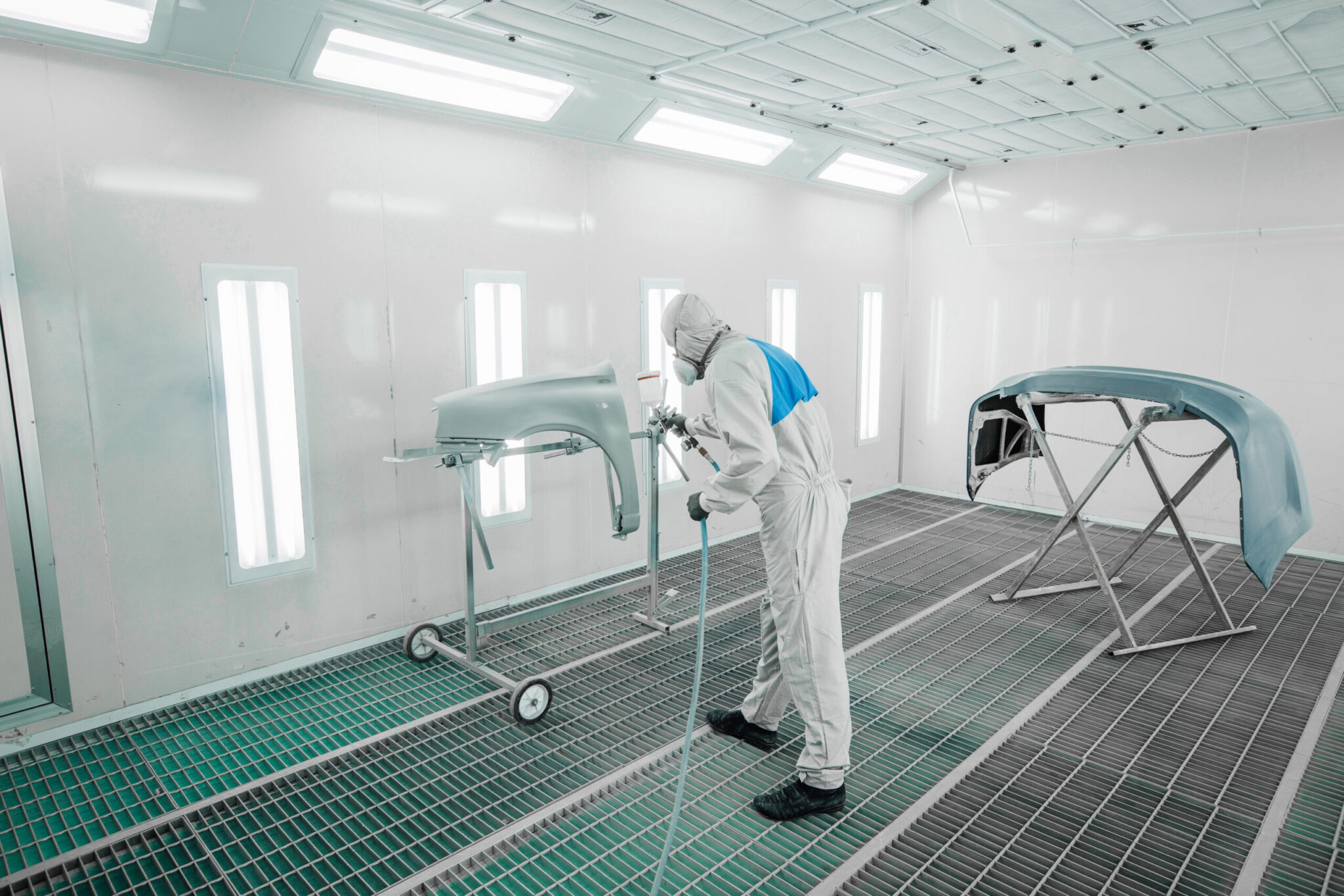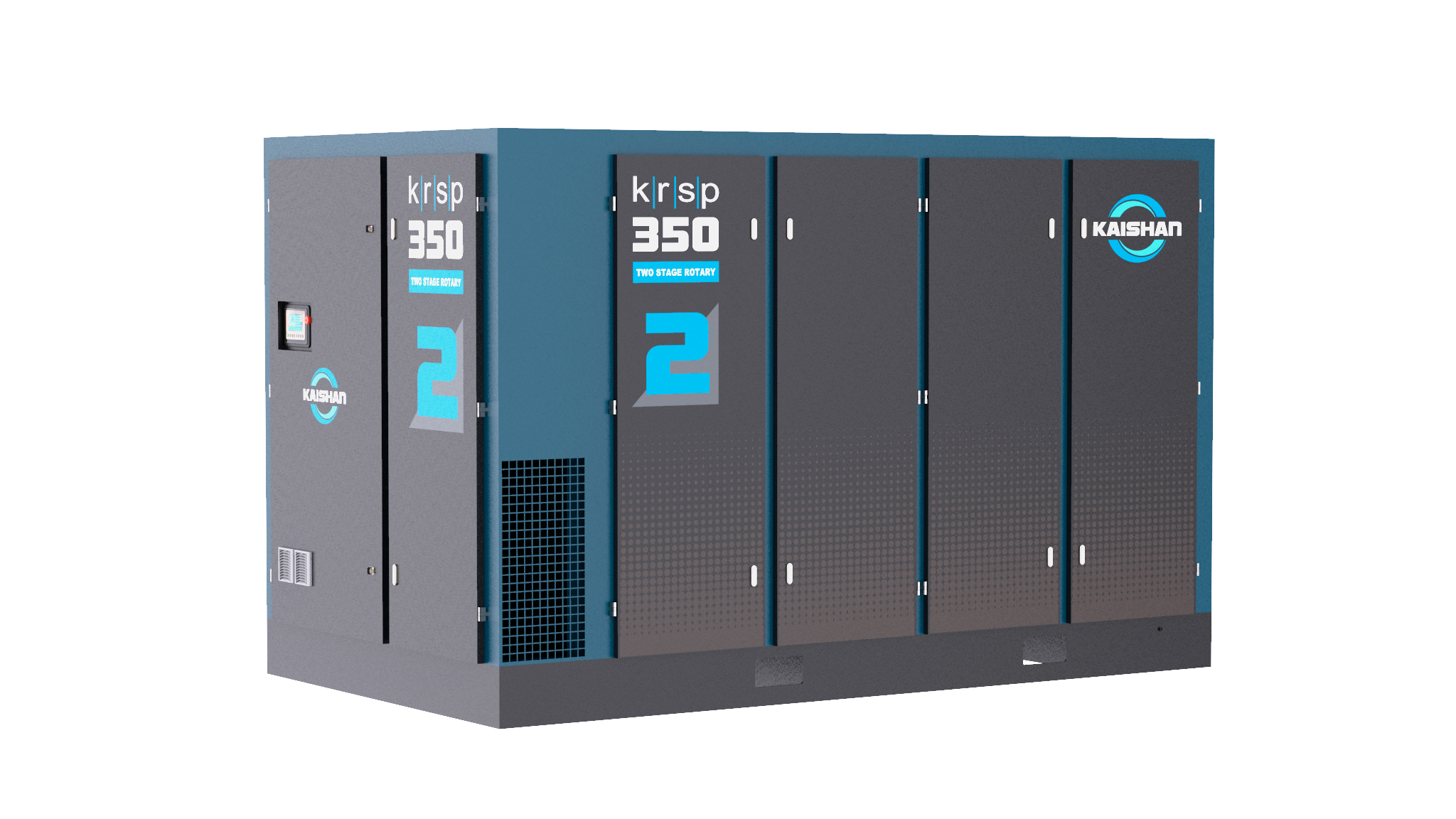
Compressed Air Solutions: The Core of Railways and Locomotive Operations
August 23, 2023
How to Pick the Right Air Compressor for Your Dry Cleaning Business
September 6, 2023How an Air Compressor Audit Can Reduce Operating Costs
Kaishan USA | August 30, 2023 | Uncategorized

Troubleshooting problems isn’t the only reason to do an audit. It can help save energy, identify leaks, improve utilization, optimize your power band and enable new technology.
Five Ways an Air Compressor Audit Can Save You Money (Even If Everything’s Great!)
Suppose your air compressor system is working like a champ. It’s meeting all your needs, giving you enough pressure. Your energy bills are consistent. Your air quality is acceptable. You’re not having significant downtime.
What can an air compressor audit possibly do for you?
The short answer is, “plenty.” There are at least five ways an audit could save you time and money. Reduce or prevent downtime. Give you higher quality air. Prolong the life of your equipment. Create a better environment for your team.
In fact, our customer Berry Global, a $12 billion manufacturer of innovative packaging solutions, told Compressed Air Best Practices Magazine it has done audits at 40% of its plants over the past three years. And some of these audits resulted in dramatic improvements in operational efficiency and cost savings, as documented in our story on the company, (“Case Study: Kaishan Centralized Compressor Provides a Huge Savings.”)
Audits, Defined
To explain the value of audits more fully, let’s start with some definitions. The terms assessment and audit are often confused. Sometimes used interchangeably. For more help in deciding whether an audit or assessment is the best choice, see our blog post, “When To Do a Compressed Air Audit, When To Do an Assessment.”
An assessment is a walkthrough, a visual inspection of your air compression system. It can usually be completed by your local air compressor professional in a few hours.
An audit, on the other hand, is a much more detailed evaluation that takes seven to 14 days. It involves placing data-logging equipment at strategic points throughout your system to track key performance parameters and variations in demand across all your work shifts and over weekends.
You need to do an audit if:
- You have frequent unplanned shutdowns
- Performance is less than it should be
- You’re consistently failing to meet pressure demands at the most remote parts of your system
- You have to turn on more compressors to meet the same demand as you did several days or weeks previously
- Energy efficiency is dropping
- You’re experiencing significant downtime as a result of equipment failures
- You’re considering the purchase of new equipment, especially when you’re trying to justify an expenditure for a new compressor (read more on “Repair vs. Replacing an Air Compressor")
Those are obvious red flags, of course. And few experts would suggest that an audit would not be a good idea in any of those circumstances. (If you’re still unsure, an assessment by an air compressor consultant or professional might be an excellent place to start.)
But if you’re not experiencing any of these issues, an audit may still be helpful. Here’s why.
1. Save Energy
Electrical costs make up 76% of the total cost of ownership of an air compressor, according to the U.S. Department of Energy. What you pay your local utility will dwarf the initial cost and maintenance over the lifecycle of your compressed air system.
An audit does a deep dive into your system’s energy consumption, recording critical parameters and quantifying air flow, pressure drops, humidity, temperature and energy consumption.
The readings provide a complete picture of the supply side of your operation, telling you what your compressor is doing in various circumstances. And while many people focus on pressure, the critical parameter is power usage.
You might see that you don’t have enough storage to account for a sudden increase in demand. And that, rather than one large super-compressor, you can use a combination of backup and trim compressors to increase the performance and reliability of your system. Those are the kinds of issues an audit might help you identify.
You can even analyze air quality, tracking key compressed air measurements like pressure, temperature and moisture/dewpoint.
2. Stop Leaks
Compressed air systems lose between 30% and 50% of their volume to air compressor leaks, with poorly maintained systems running as high as 80%. (For more information, go to our recent blog on the topic, entitled, “Air Compressor Leaking? How to Find and Stop Leaks”).
As a result, one of the first tasks in an audit is determining how many leaks you have. And estimating how much you can save by fixing them.
Handheld leak detection devices have been available for some time and have been successful at helping companies locate the 80% of compressed air leaks that are not in the audible range.
But now there are newer, visual, acoustic imaging devices known as ultrasonic leak detection systems. They use multiple directional microphones to triangulate the position of a leak source, overlaying the leak’s ultrasonic “signal” on a video image of your plant.
Even more importantly, the device calculates the leak volume and the potential savings you can achieve by fixing it. If the leak is in a pipe 30 feet above the plant floor, for example, the system will provide a cost estimate of the annual savings. Then you can decide whether it’s worth worrying about. Specifically, whether it’s worth putting up scaffolding or bringing in a lift.
The device can then do a printout you can give your maintenance people, enabling them to find and fix the leak.

Ultrasonic leak detection can help you pinpoint sources of leaks in your compressed air system, like this illustration of the Fluke ii900 Industrial Acoustic Imager.
Most professional air compressor consultants use these advanced leak detection systems in their audits.
Once again, Berry Global told Compressed Air Best Practices Magazine that one-third of its plants do annual leak studies, while another third has done one within the last three years. They rely on ultrasonic leak detection, working with distributors and other compressed air professionals.
3. Right-size Your System
One of the critical questions an audit addresses is sizing. Is your system sized properly (with flow or storage) to meet your highest demand?
The typical commercial or industrial operation adds capabilities all the time—an expansion to do painting, a room conversion to add a new specialty, some new air tools. It all adds up. Any of those things could require more flow or pressure than your current system can handle.

Do you have enough system capacity to accommodate the addition of a new spray painting booth?
But sometimes, the opposite is true. Your compressor may have been sized with “room to grow” or purchased to handle end uses that have since been removed from the system. It may seem counterintuitive, but with rotary screw air compressors, “too much” is almost as bad as “not enough.”
Here’s why. Screw compressors are designed for a 100% duty cycle. Run them significantly less than that and you’ll waste energy, reduce equipment lifetime and perform more maintenance. That’s why it’s so important to have your air compressors sized appropriately.
A good example: we had a customer in the defense industry with several large compressors, including two 300 HP compressors and a 400 HP unit with a variable speed drive (VSD). Because the application was oversized, the customer was having reliability issues.
We conducted an audit and recommended and installed a KRSP2-250 (250 HP) two-stage rotary screw air compressor with a VSD. As a result, the company has saved over $30,000 a year, with substantially reduced maintenance costs.
4. Lower Your Pressure Band
Most compressors use load/no load controls, sometimes called online/offline. With this approach, you set a load pressure and an unload pressure, such as 115 PSIG and 125-130 PSIG, respectively.
That gap of ten or 15 pounds is called the pressure band. The goal is to keep your compressor from loading and unloading too fast and starting and stopping too often because it wears out the machine.
But if you have two or three compressors that aren't tied into each other electronically, you could be loading at 110 PSIG and unloading at 120 one machine. With another at 115 to 125 and the last at 120 to 130 PSIG.
That's a lot of wasted energy, especially if your plant needs 100 PSIG and you're compressing up to 130. A VSD can close that gap by changing the motor RPMs to keep the pressure right around 115 PSIG, plus or minus two PSIG. If the investment in a VSD is not in the application budget, there's an alternative.
When we do an audit, we put a pressure transducer on the header to show the customer how much pressure they actually need. And while they might think they need 100 pounds of pressure, we can show them they’ve been down to 85 pounds many times over the last month without suffering adverse consequences (like a plant shutdown).
Our goal when we do these audits is to get the plant to take the header pressure as low as possible to conserve energy.
5. Leap Ahead with New Technology, Both Yours and Ours
It’s not unusual for your business to add more tools and equipment, but forget to factor in the impact the addition will have on compressed air flow. And some tools won’t work with an underpowered compressor.
For example, you may find pressure requirements are higher if your addition is a high-pressure tool like a sandblaster.

If you’re adding a high-pressure tool like a sandblaster, an air audit can help you ensure you have enough compressor capacity.
So you may be adding new technology in your facility. But there’s also the impact of new air compressor technology, like the leak detection equipment we mentioned earlier. And the effect of new control systems like VSD (mentioned above) and master control or flow control (for more on control systems, see our blog post, “Go Green with Energy Efficient Air Compressors.”
A excellent illustration involved a major food manufacturer that had deployed several compressors, including three 100 HP machines, a 125 HP compressor and one 200 HP unit that were not centrally controlled and were running at a higher pressure than necessary.
We recommended and installed a KRSP2-300 (300 HP) premium compressor with VSD as a trim unit and a KRSP2-250 (250 HP) as the base load compressor. Together these units achieved almost $80,000 in energy savings annually, with reduced maintenance costs, more stable header pressure and additional flow to accommodate an upcoming plant expansion.

Kaishan’s KRSP2 two-stage rotary screw air compressor is one of the most energy-efficient machines on the market.
Because the second stage builds on the pressure created in the first, a two-stage compressor like the KRSP2 will generate more compressed air for less energy.
It will also generate less heat of compression, allowing it to maintain tighter tolerances, further increasing efficiency and reliability. Two-stage compressors also have more bearings, all of which are under less load, extending the overall life of the air compressor.
The bottom line? A two-stage air compressor like the KRSP2 will generate up to 15-20% more flow in the same size air compressor, decrease overall power costs and have a longer life with reduced downtime. That’s a payback that will generally recoup the price difference quickly.
The Benefits of an Audit
In the final analysis, an air compressor audit can produce significant benefits for your organization:
- Reliability. An air compressor not operating at optimum levels could well break down, causing unplanned downtime and significant loss of production.
- Equipment lifespan. Anything that makes your system work harder could shorten the life of your compressor, supporting devices and end-use equipment.
- Operational improvements. Even minor adjustments in pressure or fixing the leaks in your system can significantly improve system performance. And many of those minor issues may not be apparent to your operators.
Most companies find an audit pays for itself many times over, as they record annual savings in the tens if not hundreds of thousands of dollars.
The good news is that an audit will require little, if any, interruption in your operation. Once installed, the dataloggers chug away, recording critical parameters in your system and quantifying air flow, pressure drops, humidity, temperature and energy consumption.
And that leads to the biggest payoff from an audit: it often provides key data you can use to justify capital investment in new equipment.
Local Help
If you need an audit, Kaishan USA works with a nationwide network of independent distributors, who can provide on-site help and consultation as needed. These factory-trained air compression experts have an investment in their local communities and can service your air compressor system without a problem. And they have staff members who are skilled in using advanced analysis tools on a daily basis.
Key Takeaways
-
- Audits pay for themselves, they’re not just problem-solvers
- Audits help you save energy, stop leaks, cut energy costs, right-size your system, reduce your pressure band and leap ahead with new technology
- More importantly, audits can improve reliability, increase equipment lifespan and point to operational improvements
Let Us Help
Regular audits are critical to the operation of your compressed air system and all the processes that rely on that system. If you need help finding someone to conduct one, get in touch with the experts at Kaishan. Contact us today.
Random stat or
customer quote
textXXtext
text
Suppose your air compressor system is working like a champ. It’s meeting all your needs, giving you enough pressure.

